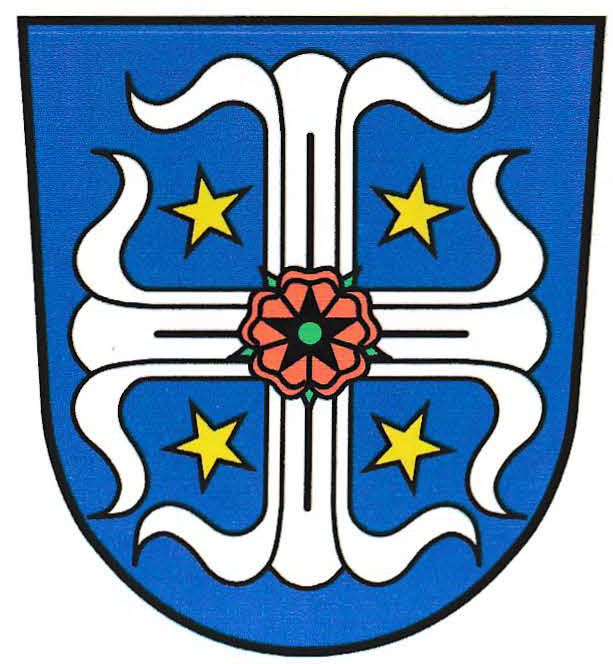Plankstadt: Difference between revisions
Knorrepoes (talk | contribs) No edit summary |
Knorrepoes (talk | contribs) m (Text replace - "[[Literature" to "{{media}} [[Literature") |
||
| Line 17: | Line 17: | ||
====Origin/meaning==== | ====Origin/meaning==== | ||
The arms are officially adopted in 1900, but are based on the oldest known village seal, dating from 1487. The cross most likely is derived from the arms of the Cistercian Monastery in Schonau, which owned most of the area at the time. The stars may be the symbol of St. Mary, the patron saint of the monastery. The colours are the colours of the Pfalz, to which the village belonged until 1802. The meaning of the rose is not known. | The arms are officially adopted in 1900, but are based on the oldest known village seal, dating from 1487. The cross most likely is derived from the arms of the Cistercian Monastery in Schonau, which owned most of the area at the time. The stars may be the symbol of St. Mary, the patron saint of the monastery. The colours are the colours of the Pfalz, to which the village belonged until 1802. The meaning of the rose is not known. | ||
{{media}} | |||
[[Literature]] : Stadler, K. : Deutsche Wappen - Bundesrepublik Deutschland. Angelsachsen Verlag, 1964-1971, 8 volumes. | [[Literature]] : Stadler, K. : Deutsche Wappen - Bundesrepublik Deutschland. Angelsachsen Verlag, 1964-1971, 8 volumes. | ||
Revision as of 03:34, 9 July 2014
| Heraldry of the World Civic heraldry of Germany - Deutsche Wappen (Gemeindewappen/Kreiswappen) |
PLANKSTADT
State : Baden-Württemberg
District (Kreis) : Rhein-Neckar Kreis (until 19793 Mannheim)
Official blazon
In Blau ein geschliffenes silbernes Lilienkreuz, belegt mit einer grünbesamten roten Rose mit grünen Kelchblättern, bewinkelt von vier fünfstrahligen goldenen Sternen.
Origin/meaning
The arms are officially adopted in 1900, but are based on the oldest known village seal, dating from 1487. The cross most likely is derived from the arms of the Cistercian Monastery in Schonau, which owned most of the area at the time. The stars may be the symbol of St. Mary, the patron saint of the monastery. The colours are the colours of the Pfalz, to which the village belonged until 1802. The meaning of the rose is not known.
Contact and Support
Partners:
Your logo here ?
Contact us
© since 1995, Heraldry of the World, Ralf Hartemink 
Index of the site
Literature : Stadler, K. : Deutsche Wappen - Bundesrepublik Deutschland. Angelsachsen Verlag, 1964-1971, 8 volumes.











